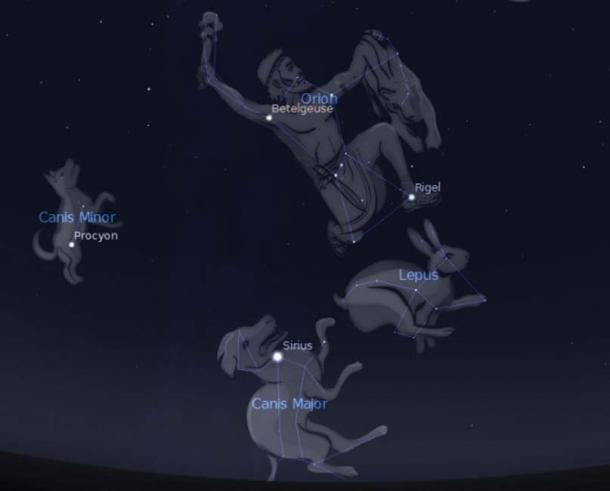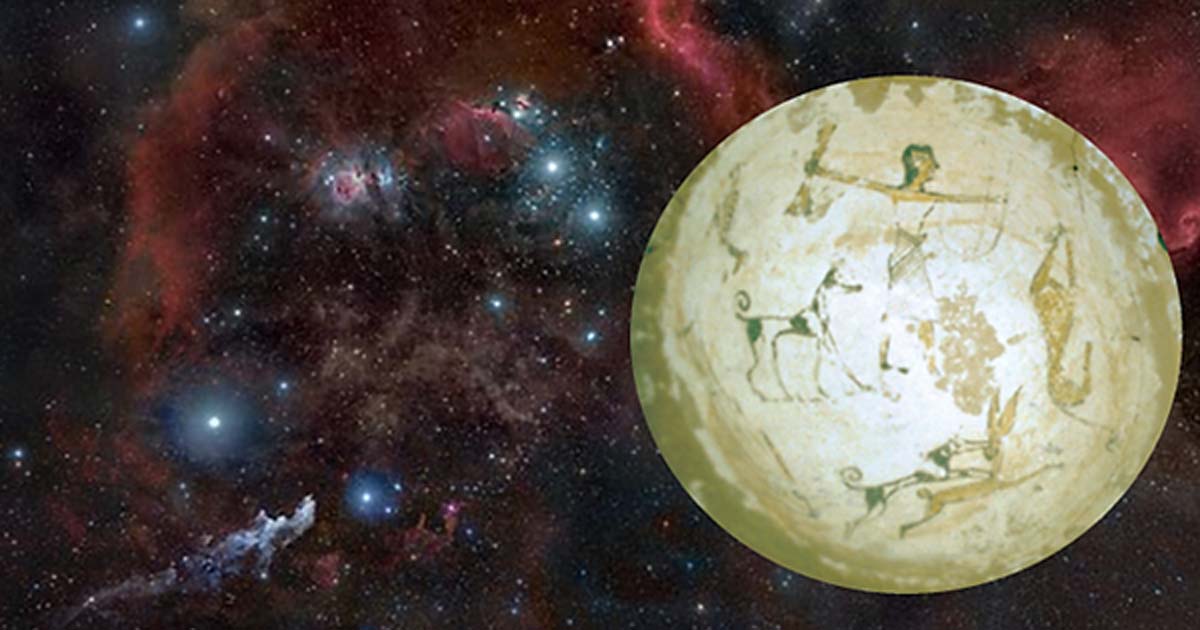This Forgotten Egyptian Dish Reveals Early Astronomical Symbols of Key Constellations
While traveling in Egypt for my studies, I came across a unique artifact in the Nubian Museum in Aswan. It was a dish which had not been recognized for the important information it holds. As soon as I saw it in 2008, I immediately understood that I had found myself in front of an "astronomical-mythological" object of enormous value.
The object goes unrecognized even today - not only among archaeologists, but also from my own colleagues who work with ancient knowledge and sacred science - simply because the discovery is unknown.

The Egyptian dish. © Adriano Forgione
Orion and the Pharaoh: Divine Hunters
Let me introduce the artifact’s key image: Orion is known by the ancients as the constellation of the "Heavenly Hunter." Sometimes the hunter is depicted with a club, but more often with a bow, and sometimes he is also shown with a lion skin. The posture this constellation assumes in the sky perfectly matches that of the Egyptian pharaoh when he was depicted as the “Divine Warrior” and “Egypt’s Divine Defender”. There is a parallel between the lines that form the silhouette of this constellation and the pharaoh's profile in the earliest dynasties (for example, in the Narmer tablet).
- The Elusive Egyptian Hall of Records and Hopi Lessons of Death and Rebirth
- Mirrors of Orion: Star Knowledge of the Ancient World – An Introduction
- Did the Ancient Egyptians know the Distance between the Inner Planets?

The Narmer palette. © Adriano Forgione
In fact, this representation is found on outer temple pillars until the Ptolemaic era. It is an artistic canon representing the form as a divine concept. The temple was a sacred place and house for cosmic order. Therefore, the Pharaoh/Orion, as the "Heavenly Hunter" of demons, protected the sacred place from disorder or chaos. Egypt’s enemies were, therefore, only a metaphor for forces opposing the divine spiritual and light forces - and not merely propaganda, as Egyptologists erroneously interpret.
One can find more ancient representations and relationships between Orion and the Great Hunter/Archer of Egyptian mythology in the dish from the Pre-dynastic period (dating back to 3500 BC) in the Museum of Aswan. This suggests that the connection could even go back to Egyptian prehistory.
Depictions of Canis Major, Canis Minor, and the Hare
The dish may show that prehistoric Egyptians already depicted the constellations now known as Orion the Hunter, the Hare, Canis Major, and Canis Minor with their ancient symbols. This would mean they were not Greek, but of Egyptian origin.

The Narmer palette. © Adriano Forgionec © Adriano Forgione
Proof for this connection, as I read it in the dish, is the depiction of a hunter with a bow and arrows, in the same posture that is recognized as the “symbol of Orion.” To the left of the hunter there is a dog, exactly where the constellation "Canis Minor" is seen in the sky. But according to mythology, and also in astronomy, there are two dogs following Orion in his hunt. The second is Canis Major, where Sirius, (called the "Dog Star”) chased the constellation of the "Hare" just under Orion’s feet.
- Visoko: An Astronomical Map of More than 100,000 Years
- The Royal Road of the King of the World, and the Ancient Center of the Earth
- Unraveling the Mystery of the Great Pyramid Air-Shafts
Everything is portrayed perfectly in this ancient dish, which was, in my opinion, a ritual object. Some might ask: and what about the leopard skin to the right? Here is an explanation: Orion, as a hunter of predators and beasts is also associated with a lion skin. According to the Greeks, he is an archetype of the one who shot down bestial strength and the darkness that it symbolizes (just like Hercules or Gilgamesh). But we know that for the ancient Egyptians, the symbol of the dominion of brutality was not associated with a lion, but with the leopard (Leo-Pardus, the Heavenly Lion) instead – and that animal’s skin was used to dress the priests and other important officials.

Ay as Sem Priest in tomb of King Tutankhamun. (Lucas/CC BY NC SA 2.0) Note the leopard skin the priest is wearing.
Recognizing Egypt’s Astronomical Knowledge
Therefore, I am sure that this marvelous object, completely an anonymously provides proof of the distant and ancient origins of Egyptian astronomical knowledge (later transposed in the Book of the Dead). It also provides an indication that the constellations which we call today the "Heavenly Hunter/Orion", "Canis Major", "Canis Minor," and the "Hare", should have their origin and names thanks to prehistoric Egyptians. Only thousands of years later was this knowledge passed to the Greeks, and eventually to the rest of the world.

Representations of ‘The Orion Entourage’ created using Stellarium. (Bob Moler)
Top Image: The Orion constellation showing the surrounding nebulas of the Orion Molecular Cloud complex. (Rogelio Bernal Andreo/CC BY SA 3.0) Detail: The Egyptian dish. © Adriano Forgione
Adriano Forgione is Director of the Italian Ancient Mysteries magazine FENIX. He is an expert in ancient symbolism and sacred science.


















Comments
Wow that would be a really good way to teach kids basic positioning of the constellations. I wonder if these were ever a plate set.
Troy Mobley